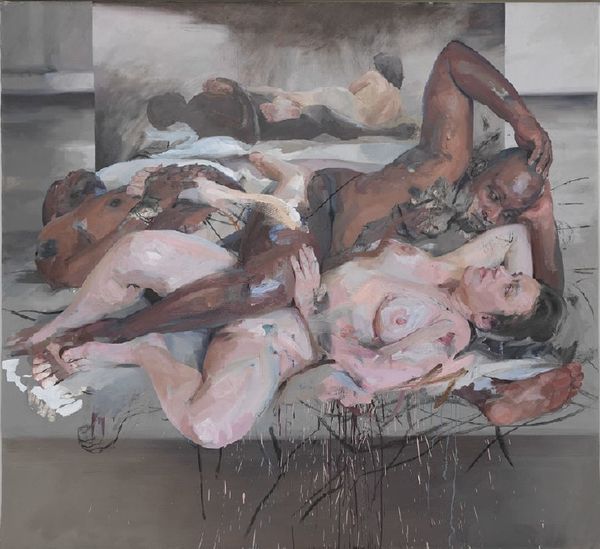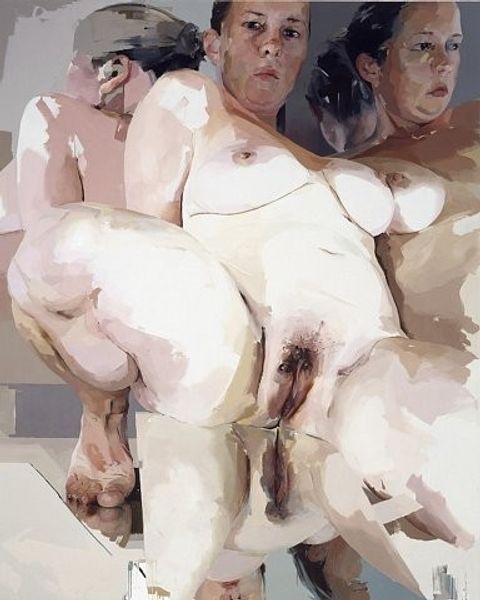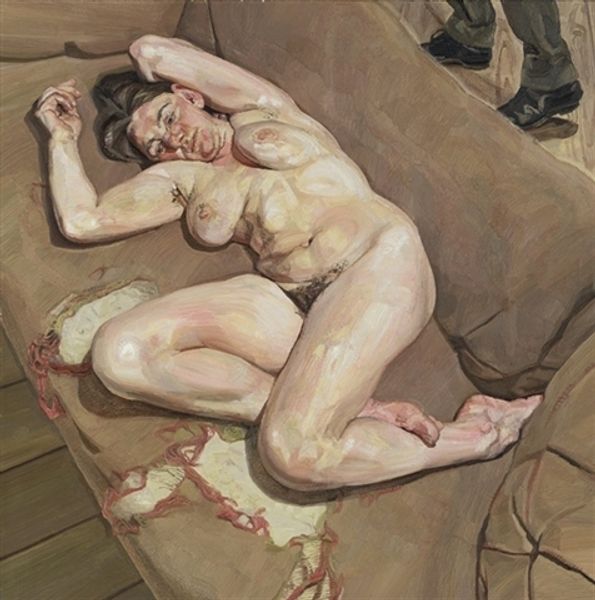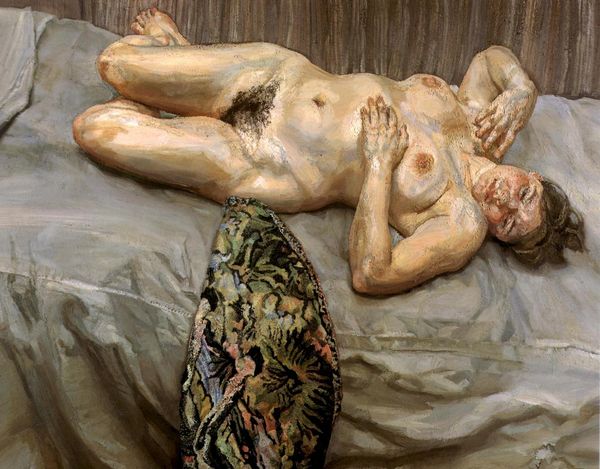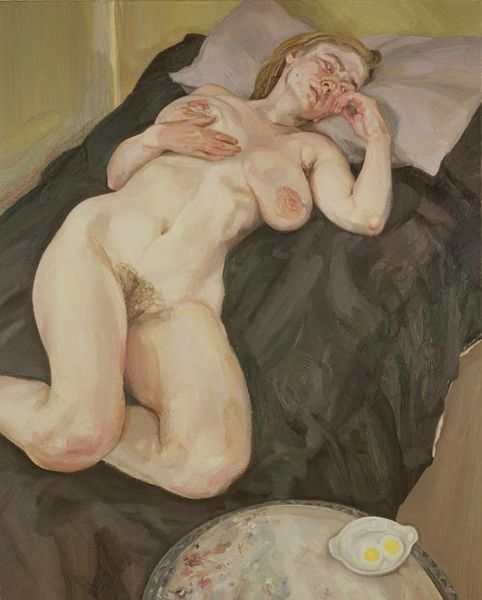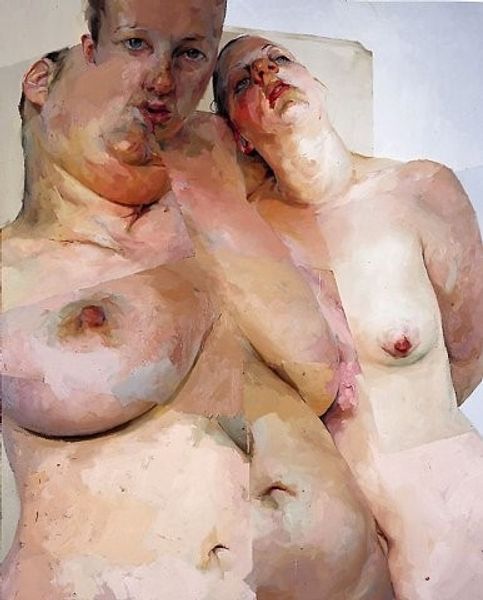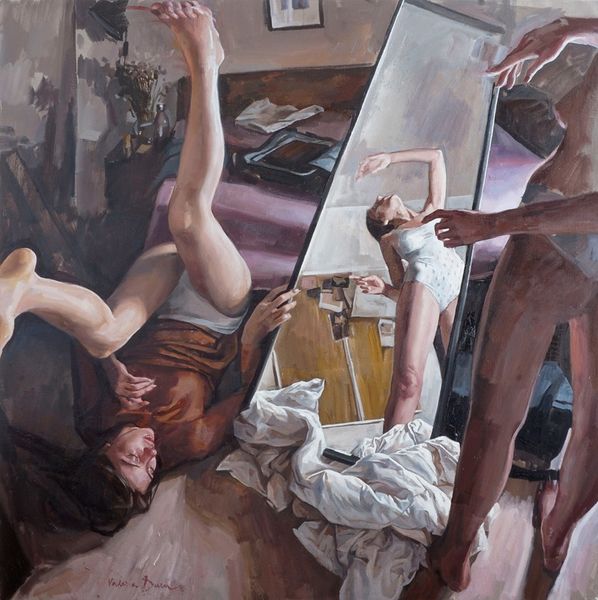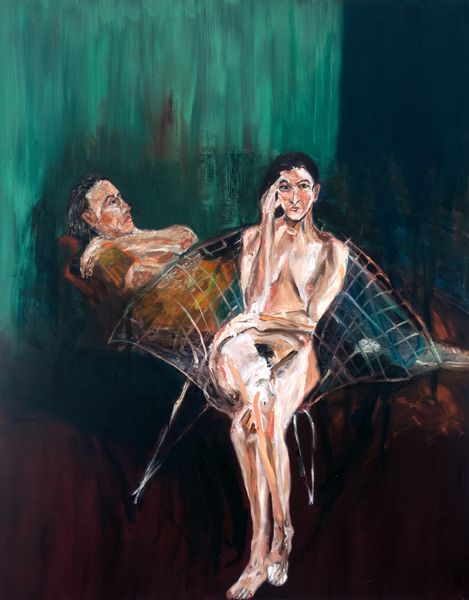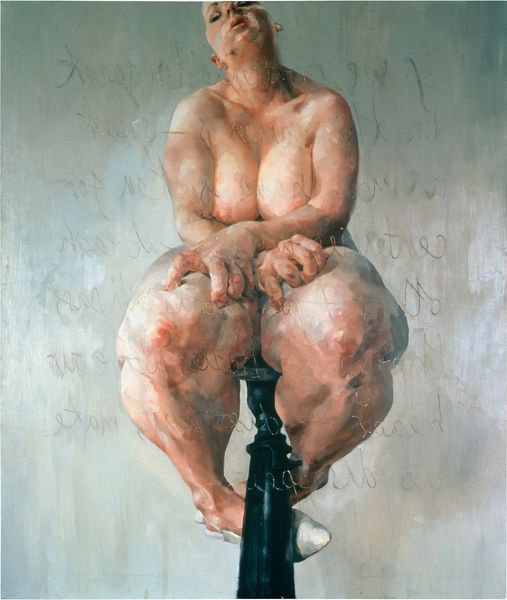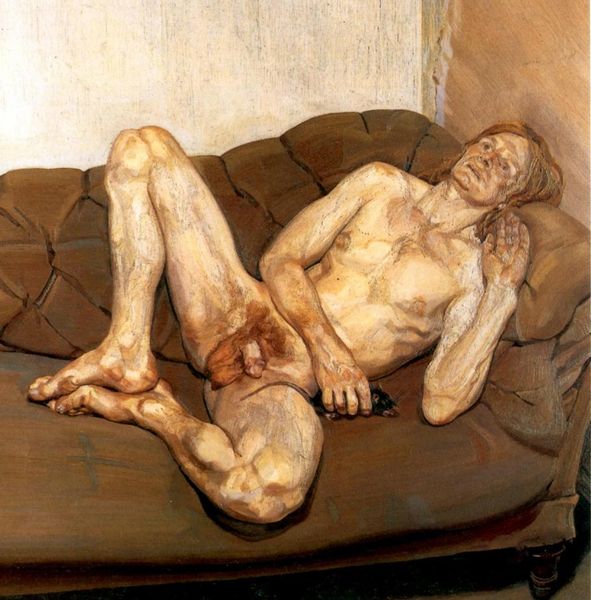
painting, oil-paint
#
portrait
#
contemporary
#
painting
#
oil-paint
#
figuration
#
oil painting
#
neo expressionist
#
neo-expressionism
#
nude
#
portrait art
#
modernism
Copyright: Jenny Saville,Fair Use
Curator: Jenny Saville’s painting "Interwine," completed in 2014, strikes me immediately with its vulnerability. It’s quite raw. What are your initial thoughts? Editor: A certain anxiety hangs in the air, doesn’t it? I notice the layered figures, the way they’re intertwined, feels almost claustrophobic, certainly intimate, but it is also unsettling. I think that the grey muted colors contributes to a gloomy ambiance as well. Curator: Absolutely. Saville is known for confronting conventional representations of the body. Here, these layered figures become almost like palimpsests, the way they repeat suggesting perhaps evolving perceptions of self. The intertwined poses suggests connection but the separate gazes maybe speaks to disconnection as well? It feels so contemporary. Editor: Indeed, and consider the social context: Saville's work challenges the male gaze dominant in art history, I think. "Interwine" seems to offer a feminist counterpoint. I find that it opens space for diverse bodies and the acceptance of varied self-perceptions. How do you interpret that ghosting of forms? Curator: I perceive it as layers of memory and identity—the psychological residue we carry. Think of those historical group portraits in which class status and alliances was carefully symbolized. Now consider this work that reveals human bodies instead of the finery usually adorning the body in classic art. Saville's symbolism is rooted more in psychological terrain. I’m wondering whether you sense an echo of expressionism in the vigorous brushwork and emotional charge? Editor: It definitely speaks to me with neo-expressionist language. But its relationship to institutions, markets, is more nuanced. Saville exists within a contemporary framework where female artists have arguably more power, but visibility is still hard won. Curator: True. Saville uses figuration, which in art history also has the baggage of depicting mostly men and heroic stories. "Interwine" is also quite a play on "figure painting." By foregrounding female and varied bodies, she makes the familiar strange and offers a space to think through what such images can do in modern life. Editor: This has been quite illuminating for me; considering how the art of our time carries echoes from historical periods but continues its dialogue with power, sexuality, and how representation informs them both. Curator: For me as well, seeing how Saville employs symbolism in our contemporary culture underscores the enduring strength and constant transformation of figurative paintings.
Comments
No comments
Be the first to comment and join the conversation on the ultimate creative platform.

